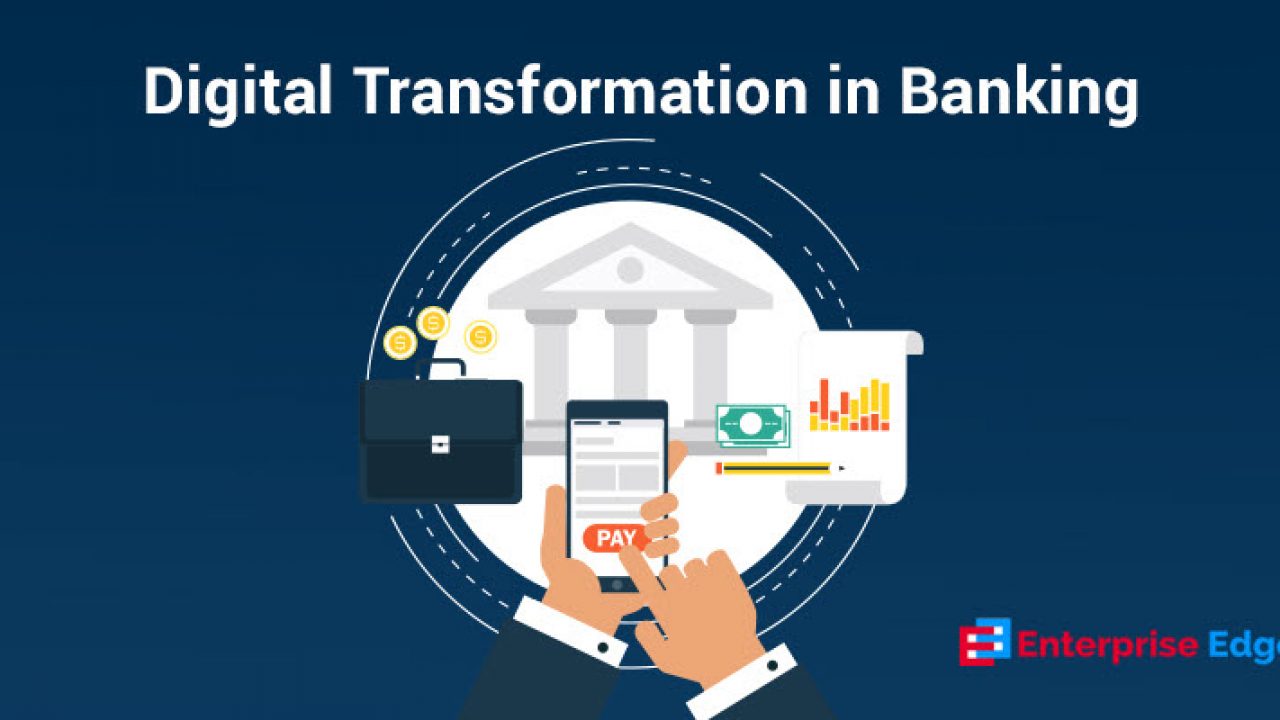-
Table of Contents
“Revolutionizing banking through technological innovation.”
Technology has had a profound impact on various industries, and banking is no exception. In recent years, advancements in technology have revolutionized the way banks operate, transforming traditional banking practices and shaping the future of the industry. From online banking to mobile payments, technology has not only improved efficiency and convenience for customers but has also opened up new opportunities for banks to innovate and expand their services. This article explores the impact of technology on the future of banking and the potential implications it holds for both customers and financial institutions.
The Role of Artificial Intelligence in Banking
Artificial intelligence (AI) has become an integral part of our daily lives, revolutionizing various industries, and banking is no exception. The role of AI in banking has grown significantly in recent years, transforming the way financial institutions operate and interact with their customers. This article will explore the impact of AI on the future of banking and how it is reshaping the industry.
One of the key areas where AI is making a significant impact is customer service. Traditional banking methods often involve long wait times and limited availability, but AI-powered chatbots are changing the game. These virtual assistants can provide instant responses to customer queries, 24/7, without the need for human intervention. By leveraging natural language processing and machine learning algorithms, chatbots can understand and respond to customer inquiries in a personalized and efficient manner.
Moreover, AI is also enhancing fraud detection and prevention in the banking sector. With the increasing sophistication of cybercriminals, traditional security measures are no longer sufficient. AI algorithms can analyze vast amounts of data, identify patterns, and detect anomalies that may indicate fraudulent activities. This proactive approach enables banks to prevent potential fraud before it occurs, safeguarding their customers’ assets and maintaining trust in the banking system.
In addition to customer service and security, AI is also transforming the way banks make lending decisions. Traditionally, loan applications were evaluated based on a set of predetermined criteria, often leading to biased decisions. AI algorithms, on the other hand, can analyze a wide range of data points, including credit history, income, and spending patterns, to assess an individual’s creditworthiness accurately. This data-driven approach not only improves the accuracy of lending decisions but also enables banks to offer personalized loan products tailored to each customer’s needs.
Furthermore, AI is revolutionizing the way banks manage risk. By analyzing historical data and market trends, AI algorithms can predict potential risks and identify opportunities for growth. This predictive analytics enables banks to make informed decisions, optimize their portfolios, and mitigate potential losses. Additionally, AI-powered trading algorithms can execute trades at lightning speed, leveraging real-time market data and complex mathematical models to maximize returns.
However, the adoption of AI in banking is not without challenges. One of the primary concerns is the ethical use of customer data. As AI relies heavily on data, banks must ensure that customer information is handled securely and in compliance with privacy regulations. Transparency and accountability are crucial to building trust with customers and maintaining a positive reputation.
Moreover, the integration of AI into existing banking systems can be complex and costly. Banks need to invest in infrastructure, data management, and employee training to fully leverage the potential of AI. Additionally, there is a need for skilled professionals who can develop and maintain AI systems, further adding to the cost and resource requirements.
Despite these challenges, the role of AI in banking is set to expand in the future. As technology continues to advance, AI-powered solutions will become more sophisticated, enabling banks to provide even more personalized and efficient services. The future of banking lies in the seamless integration of AI into every aspect of the industry, from customer service to risk management.
In conclusion, AI is revolutionizing the banking industry, transforming the way banks interact with customers, detect fraud, make lending decisions, and manage risk. While there are challenges to overcome, the potential benefits of AI in banking are immense. As we move towards a more technologically advanced future, AI will undoubtedly play a crucial role in shaping the banking landscape.
Blockchain Technology and its Influence on Banking
Blockchain Technology and its Influence on Banking
In recent years, technology has revolutionized various industries, and banking is no exception. One of the most significant technological advancements that have the potential to reshape the future of banking is blockchain technology. Blockchain, a decentralized and transparent digital ledger, has gained immense popularity due to its ability to enhance security, efficiency, and trust in financial transactions. In this article, we will explore the impact of blockchain technology on the future of banking.
First and foremost, blockchain technology has the potential to revolutionize the way banks handle transactions. Traditionally, banks have relied on centralized systems to process and verify transactions, which can be time-consuming and prone to errors. However, with blockchain, transactions can be recorded and verified in real-time, eliminating the need for intermediaries and reducing the risk of fraud. This increased efficiency not only saves time but also reduces costs for both banks and customers.
Furthermore, blockchain technology can enhance the security of banking transactions. The decentralized nature of blockchain ensures that all transactions are recorded and stored across multiple computers, making it nearly impossible for hackers to manipulate or alter the data. Additionally, each transaction is encrypted and linked to the previous transaction, creating a chain of blocks that is highly resistant to tampering. This heightened security can help protect sensitive customer information and prevent unauthorized access to financial data.
Another significant impact of blockchain technology on banking is its potential to improve transparency and trust. With blockchain, all transactions are visible to all participants in the network, creating a transparent and auditable record of every transaction. This transparency can help build trust between banks and their customers, as it allows for greater accountability and reduces the risk of fraudulent activities. Moreover, the immutability of blockchain ensures that once a transaction is recorded, it cannot be altered or deleted, further enhancing trust in the banking system.
In addition to transaction processing, blockchain technology can also streamline other banking processes, such as identity verification and Know Your Customer (KYC) procedures. By leveraging blockchain, banks can securely store and verify customer identities, eliminating the need for repetitive and time-consuming verification processes. This not only saves time for both banks and customers but also reduces the risk of identity theft and fraud.
Furthermore, blockchain technology has the potential to enable faster and more cost-effective cross-border transactions. Currently, international money transfers can take several days to process and involve high fees. However, with blockchain, transactions can be settled in real-time, eliminating the need for intermediaries and reducing costs. This can greatly benefit individuals and businesses that rely on cross-border transactions, making global commerce more efficient and accessible.
In conclusion, blockchain technology has the potential to revolutionize the future of banking. Its ability to enhance security, efficiency, transparency, and trust in financial transactions makes it a game-changer for the industry. As banks continue to explore and adopt blockchain technology, we can expect to see significant improvements in transaction processing, security, and customer experience. The future of banking is undoubtedly intertwined with the transformative power of blockchain technology.
Cybersecurity Challenges in the Digital Banking Era
The rapid advancement of technology has revolutionized various industries, and banking is no exception. With the rise of digital banking, customers can now conveniently access their accounts, make transactions, and manage their finances from the comfort of their homes. However, this digital transformation has also brought about new challenges, particularly in the realm of cybersecurity.
In the digital banking era, cybersecurity has become a paramount concern for both financial institutions and their customers. As technology continues to evolve, so do the tactics employed by cybercriminals. These malicious actors are constantly finding new ways to exploit vulnerabilities in banking systems, putting sensitive customer data and financial assets at risk.
One of the primary cybersecurity challenges in the digital banking era is the threat of data breaches. Financial institutions store vast amounts of customer data, including personal information, account details, and transaction history. This valuable data is a prime target for cybercriminals who seek to gain unauthorized access and exploit it for financial gain. A single data breach can have severe consequences, not only for the affected customers but also for the reputation and financial stability of the bank.
To combat this threat, banks must invest in robust cybersecurity measures. This includes implementing multi-factor authentication, encryption protocols, and intrusion detection systems. Additionally, regular security audits and vulnerability assessments are essential to identify and address any weaknesses in the system. By staying one step ahead of cybercriminals, banks can better protect their customers’ data and maintain their trust.
Another cybersecurity challenge in the digital banking era is the rise of phishing attacks. Phishing is a technique used by cybercriminals to trick individuals into revealing sensitive information, such as login credentials or credit card details. These attacks often come in the form of deceptive emails or websites that mimic legitimate banking platforms. Unsuspecting customers may unknowingly provide their personal information to these fraudulent sources, leading to identity theft or financial loss.
To mitigate the risk of phishing attacks, banks must educate their customers about the importance of vigilance and provide guidance on how to identify and report suspicious emails or websites. Additionally, implementing advanced anti-phishing technologies can help detect and block fraudulent attempts, further safeguarding customer information.
Furthermore, the increasing adoption of mobile banking has introduced new cybersecurity challenges. Mobile devices are inherently more vulnerable to security threats due to their portability and the potential for loss or theft. Additionally, the use of public Wi-Fi networks can expose users to potential eavesdropping or man-in-the-middle attacks.
To address these challenges, banks must prioritize mobile security. This includes implementing strong authentication methods, such as biometrics or one-time passwords, to ensure that only authorized individuals can access mobile banking applications. Banks should also encourage customers to regularly update their devices’ operating systems and use reputable security software to protect against malware and other threats.
In conclusion, the digital banking era has brought about numerous benefits and conveniences for customers. However, it has also presented significant cybersecurity challenges. Data breaches, phishing attacks, and mobile security vulnerabilities are just a few of the threats that banks must contend with. By investing in robust cybersecurity measures, educating customers, and staying vigilant, banks can navigate these challenges and ensure the safety of their customers’ data and financial assets in the ever-evolving landscape of technology.In conclusion, the impact of technology on the future of banking is significant. It has revolutionized the way financial institutions operate, making banking services more accessible, efficient, and secure. The adoption of technologies such as mobile banking, artificial intelligence, blockchain, and biometrics has transformed the banking industry, enabling faster transactions, personalized services, and enhanced security measures. As technology continues to advance, it is expected to further shape the future of banking, leading to more innovative solutions and improved customer experiences.


